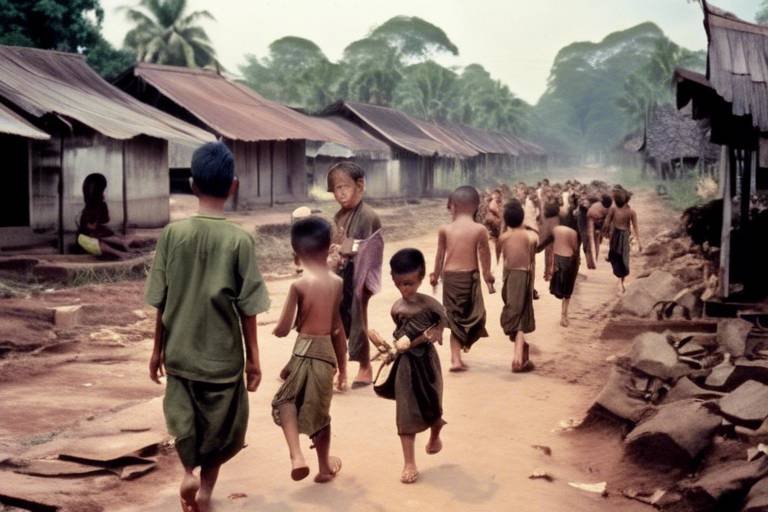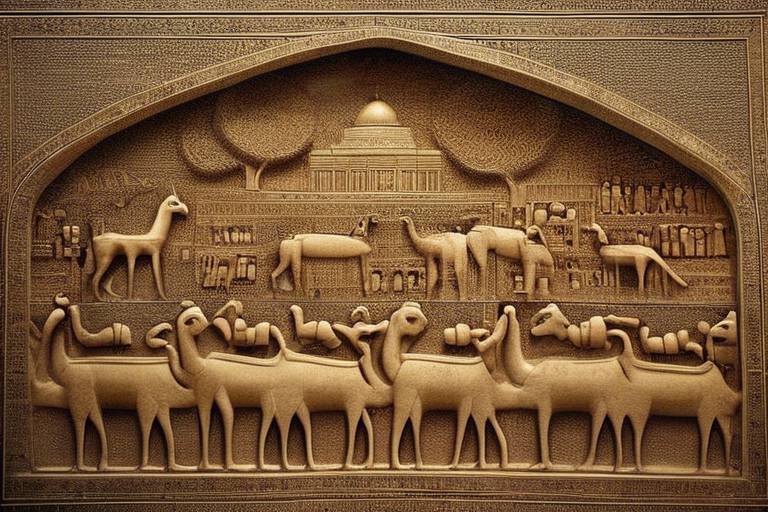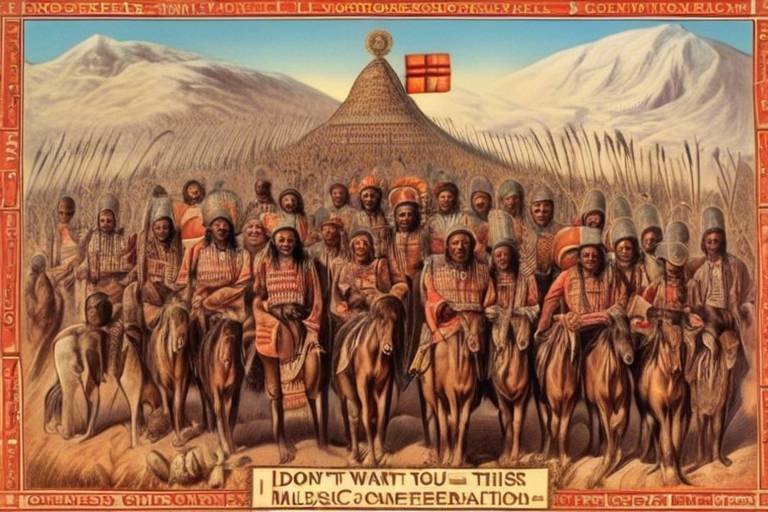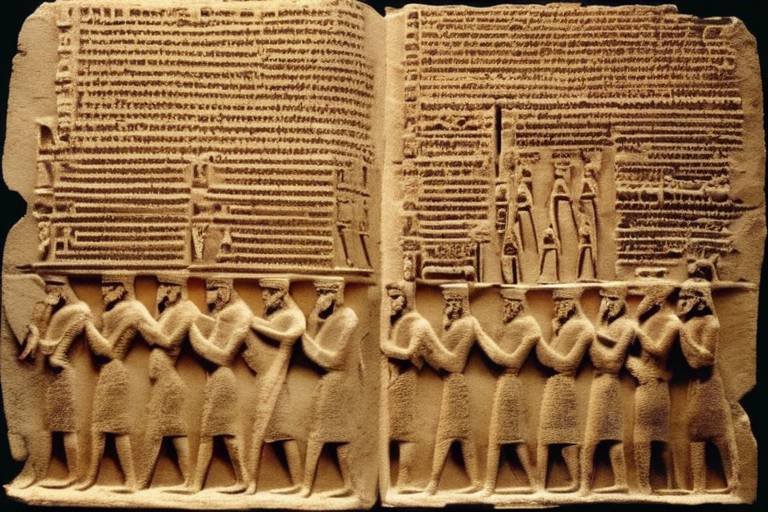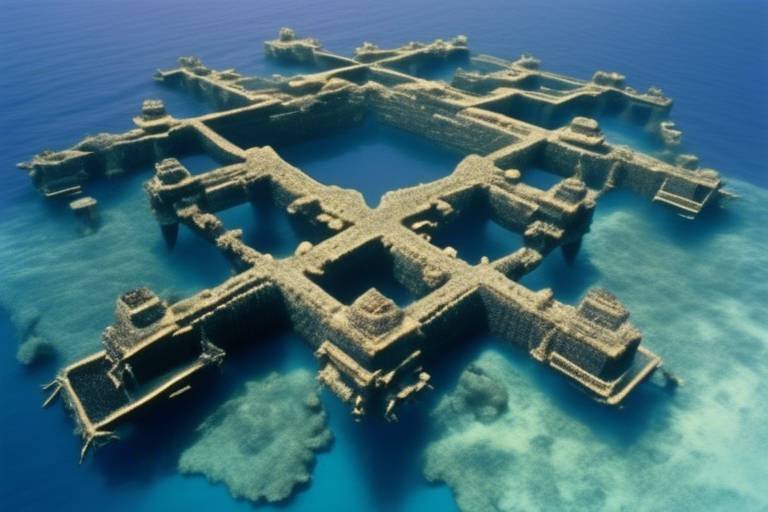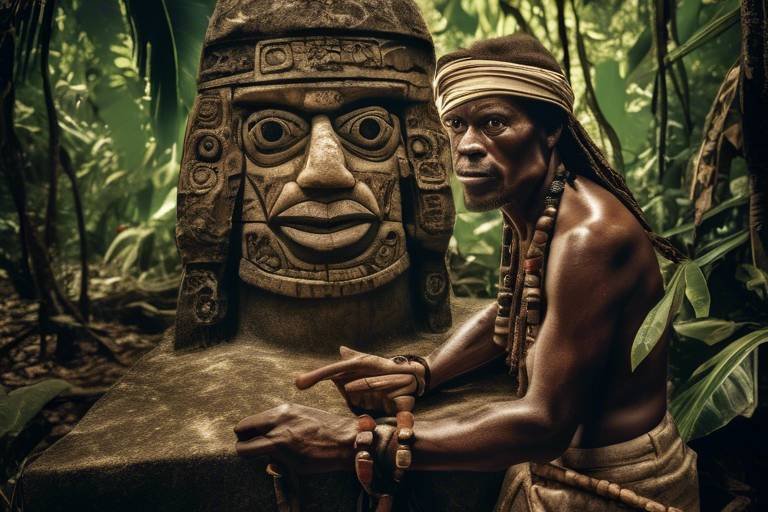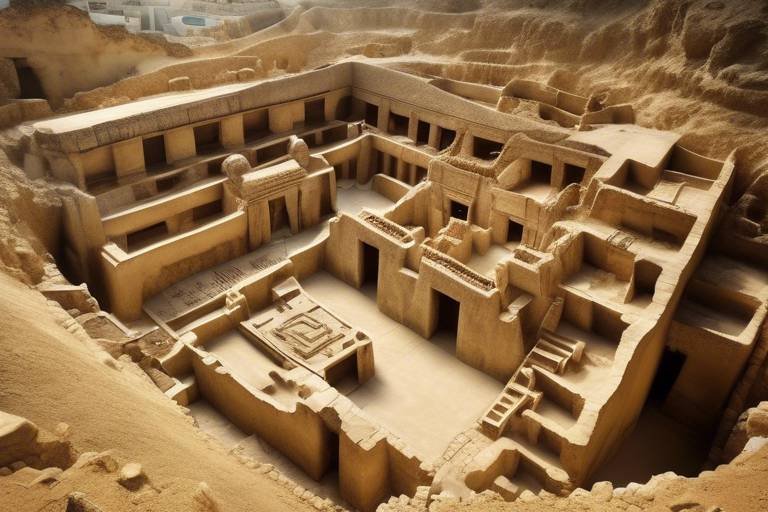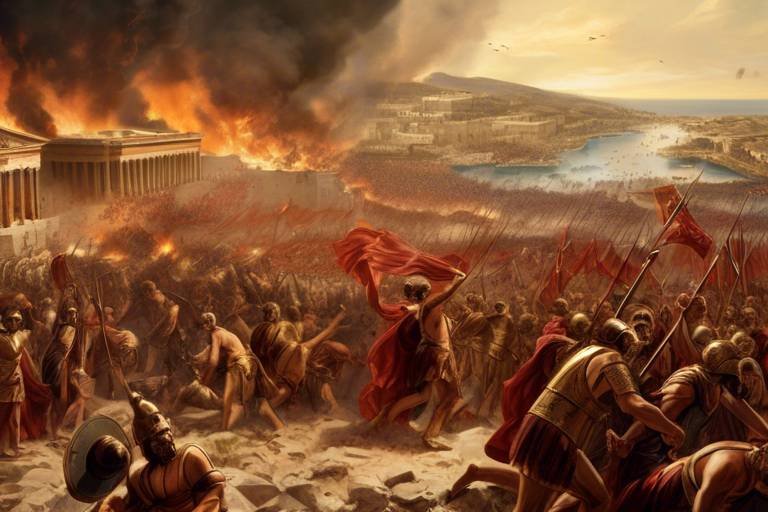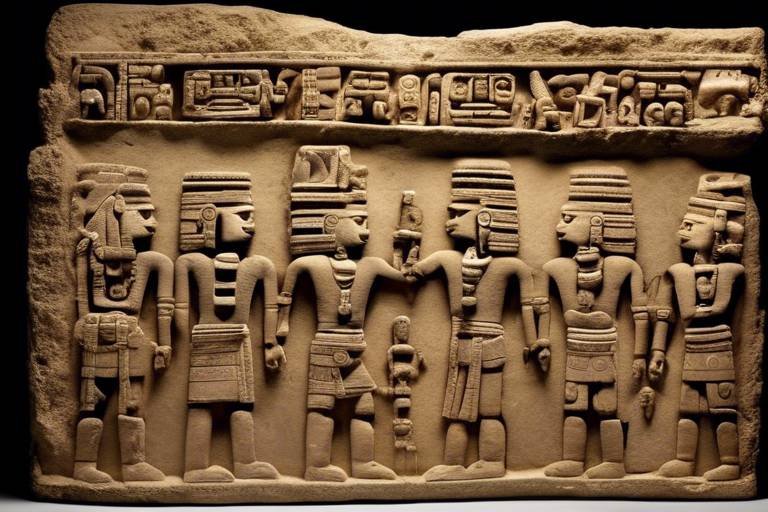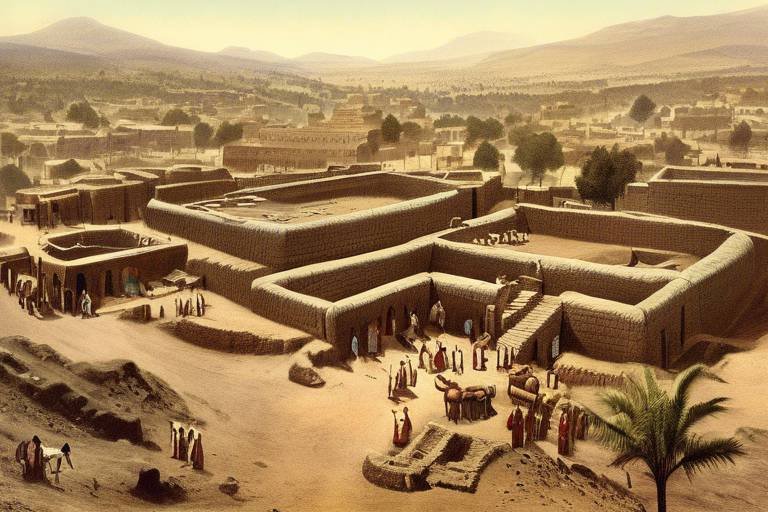The Decline of the Khmer Empire - Lessons Learned
The Khmer Empire, once a powerful and prosperous civilization in Southeast Asia, faced a gradual decline that offers valuable lessons for contemporary societies and governments. At its peak during the Angkor period, the empire's grandeur and architectural marvels mesmerized the world, but internal struggles, external invasions, and environmental degradation eventually led to its downfall.
Internal conflicts and political instability plagued the Khmer Empire, weakening its governance structure and societal cohesion. Power struggles among the ruling elite and lack of effective leadership sowed seeds of discord that hindered the empire's ability to govern efficiently and maintain social order.
Environmental degradation and resource depletion further exacerbated the empire's challenges. Rampant deforestation and agricultural practices led to soil erosion, diminishing the once fertile lands that sustained the empire's population. The depletion of natural resources posed a significant threat to the empire's economic sustainability.
External invasions and military defeats also played a crucial role in the decline of the Khmer Empire. Constant conflicts with neighboring states, coupled with military setbacks, gradually eroded the empire's territorial control and diminished its influence in the region.
Social unrest and cultural decline added to the empire's woes, as religious tensions and internal divisions weakened the social fabric. The once vibrant cultural identity of the Khmer people began to fade, contributing to a sense of disunity and loss of collective purpose.
Economic challenges and trade disruptions further strained the empire's prosperity. Declining commerce and disruptions in trade routes impacted the empire's ability to generate wealth and sustain its growth, leading to economic stagnation and decline.
Reflecting on the lessons learned from the decline of the Khmer Empire, contemporary societies and governments can draw parallels to address similar issues they face today. By prioritizing effective governance, environmental conservation, social cohesion, and economic resilience, societies can strive to avoid the pitfalls that befell the once-mighty Khmer Empire.
Preserving the cultural heritage and historical legacy of the Khmer Empire serves as a poignant reminder of the past glory and a source of inspiration for future generations. The architectural wonders of Angkor Wat and other ancient structures stand as testaments to the empire's achievements, urging us to protect and honor our shared history.

Historical Background of the Khmer Empire
The Khmer Empire, a powerful civilization that once flourished in Southeast Asia, had a rich historical background that shaped its rise and eventual decline. Emerging in the 9th century, the Khmer Empire reached its pinnacle during the Angkor period, establishing a vast and sophisticated empire that encompassed present-day Cambodia, Thailand, Laos, and parts of Vietnam. The empire's success can be attributed to its strategic location, innovative water management systems, and advanced architectural achievements, notably the iconic Angkor Wat temple complex.
At its height, the Khmer Empire was a dominant force in the region, known for its grandeur and cultural achievements. The rulers of the empire, such as King Suryavarman II, left a lasting legacy through monumental construction projects and religious patronage. The empire's prosperity was fueled by agricultural advancements, including the utilization of intricate irrigation systems that supported a thriving rice-based economy.
However, the Khmer Empire also faced internal challenges that would eventually contribute to its downfall. Power struggles among the ruling elite, succession disputes, and court intrigues weakened the empire's governance structure and led to periods of instability. The lack of a clear succession mechanism often resulted in political turmoil and fragmentation within the empire.
Moreover, the Khmer Empire grappled with environmental issues, particularly deforestation and soil erosion, which threatened its agricultural productivity. The extensive clearing of forests for urban expansion and temple construction disrupted ecological balance, leading to soil degradation and decreased agricultural yields. This environmental degradation, coupled with population growth, strained the empire's ability to sustain its population and economy.
Despite its initial successes, the Khmer Empire's expansionist ambitions and territorial disputes with neighboring states eventually exposed it to external threats. The empire faced invasions from the neighboring Cham and Ayutthaya kingdoms, as well as conflicts with the Vietnamese and the Mongols. Military defeats and territorial losses weakened the empire's defenses and eroded its influence in the region.
Furthermore, social unrest and cultural decline plagued the Khmer Empire in its later years. Religious tensions, particularly between Hindu and Buddhist factions, divided the population, while the loss of centralized authority led to a breakdown of social order. The decline of artistic and architectural achievements, once hallmarks of Khmer culture, reflected a broader cultural stagnation within the empire.
In conclusion, the historical background of the Khmer Empire illustrates a complex interplay of factors that shaped its trajectory from a thriving civilization to eventual decline. By examining the internal struggles, environmental challenges, external invasions, social unrest, and cultural decline that characterized the empire's history, we can glean valuable insights into the vulnerabilities that can undermine even the most powerful of civilizations.

Internal Struggles and Political Instability
The Khmer Empire, once a beacon of power and grandeur, faced significant internal struggles and political instability that ultimately contributed to its downfall. Within the empire's borders, a web of conflicting interests, power struggles, and internal strife plagued the governance structure, weakening the unity and cohesion of the society. The constant struggle for control and authority among the ruling elite led to a fractured leadership, unable to effectively govern and address the needs of the populace. This internal turmoil created a breeding ground for dissent and disunity, sowing the seeds of the empire's eventual demise.
As different factions vied for power and influence, the political landscape of the Khmer Empire became increasingly volatile and unstable. The lack of a strong central authority and the presence of competing power centers further exacerbated the internal divisions, making it challenging to implement cohesive policies or maintain social order. The infighting among the ruling class not only weakened the empire's ability to govern effectively but also created opportunities for external forces to exploit these internal weaknesses for their own gain.
Moreover, the absence of a unified vision and common purpose among the leadership of the Khmer Empire hindered its ability to address pressing issues and adapt to changing circumstances. The focus on personal agendas and short-term gains overshadowed the long-term interests of the empire, leading to a gradual erosion of trust and legitimacy in the ruling establishment. This lack of political stability and internal cohesion left the empire vulnerable to external threats and incapable of withstanding the challenges it faced both from within and beyond its borders.
The internal struggles and political instability within the Khmer Empire serve as a cautionary tale for contemporary societies and governments. By examining the root causes of the empire's decline, modern civilizations can learn valuable lessons about the importance of strong leadership, effective governance, and social cohesion in ensuring the stability and prosperity of a nation. Addressing internal conflicts, promoting unity, and fostering a sense of common purpose among diverse groups are essential components of building resilient and sustainable societies that can withstand the test of time.

Environmental Degradation and Resource Depletion
Exploring the factors that led to the fall of the Khmer Empire in Southeast Asia and drawing valuable lessons from its decline that can be applied to contemporary societies and civilizations.
Understanding the rise of the Khmer Empire, its peak during the Angkor period, and the factors that contributed to its initial success and expansion.
Examining the internal conflicts, power struggles, and political instability within the Khmer Empire that weakened its governance structure and societal cohesion.
Analyzing the impact of environmental degradation, deforestation, and resource depletion on the Khmer Empire's agricultural productivity and economic sustainability.
The environmental degradation and resource depletion played a significant role in the decline of the Khmer Empire. The once lush forests were cleared for agriculture and construction, leading to soil erosion and loss of biodiversity. This unsustainable exploitation of natural resources resulted in a decline in agricultural productivity, which was the backbone of the empire's economy. The depletion of resources not only affected the economy but also contributed to social unrest as competition for dwindling resources increased among the population.
Discussing the external invasions, conflicts with neighboring states, and military defeats that gradually eroded the Khmer Empire's territorial control and influence.
Exploring the social unrest, religious tensions, and cultural decline that plagued the Khmer Empire, leading to a loss of identity and unity among its people.
Investigating the economic challenges, trade disruptions, and decline of commerce that impacted the Khmer Empire's prosperity and ability to sustain its growth.
Drawing parallels between the decline of the Khmer Empire and contemporary issues faced by governments, societies, and civilizations worldwide to extract valuable lessons for the present and future.
Highlighting the importance of preserving the cultural heritage, historical legacy, and architectural wonders of the Khmer Empire as a reminder of the past and a source of inspiration for future generations.
Stay tuned for answers to common questions about the Khmer Empire's decline and the lessons learned from it.

External Invasions and Military Defeats
External invasions and military defeats played a pivotal role in the gradual decline of the once-mighty Khmer Empire. The empire faced numerous challenges from neighboring states and external forces that tested its military strength and territorial integrity. These invasions not only weakened the empire's defenses but also strained its resources and manpower, making it increasingly vulnerable to further attacks.
One of the most significant military defeats that the Khmer Empire experienced was at the hands of the Ayutthaya Kingdom, a powerful rival in the region. The Ayutthaya forces launched successful incursions into Khmer territory, capturing key strategic locations and weakening the empire's control over its domains. These military defeats not only resulted in territorial losses but also shattered the Khmer Empire's aura of invincibility, emboldening other neighboring states to challenge its authority.
Moreover, the external invasions exposed the vulnerabilities of the Khmer Empire's military apparatus and highlighted the need for strategic reforms and modernization. The empire's reliance on traditional warfare tactics and outdated military technology proved inadequate in the face of more advanced and organized adversaries, leading to a series of defeats that further undermined its military prowess and influence in the region.
As the external pressures mounted and the empire struggled to repel invasions, internal divisions and dissent among the ruling elite further weakened its ability to mount a unified defense. The lack of coordination and cooperation within the Khmer leadership exacerbated the impact of military defeats, ultimately hastening the empire's decline and fragmentation.

Social Unrest and Cultural Decline
Social unrest and cultural decline played a significant role in the downfall of the once-mighty Khmer Empire. As internal conflicts escalated and power struggles intensified, the societal fabric of the empire began to fray. The once-unified populace found themselves divided along various lines, leading to a weakening of social cohesion and a loss of collective identity.
Religious tensions further exacerbated the situation, as different belief systems clashed, creating rifts within the population. The cultural decline that ensued saw a diminishing emphasis on the arts, architecture, and intellectual pursuits that had once defined the Khmer Empire's grandeur. The decline in cultural output mirrored the broader societal disarray, reflecting a loss of direction and purpose among the empire's people.
Moreover, the erosion of traditional values and norms contributed to a sense of disillusionment and detachment among the population. As the empire grappled with internal strife and external pressures, the once-vibrant cultural tapestry began to unravel, leaving behind a shadow of its former glory.
In the face of social unrest and cultural decline, the Khmer Empire struggled to maintain its identity and unity, ultimately succumbing to the forces that had been steadily chipping away at its foundations. The lessons learned from this period serve as a stark reminder of the importance of social cohesion, cultural preservation, and the need for a shared sense of purpose in ensuring the longevity of any civilization.

Economic Challenges and Trade Disruptions
Exploring the factors that led to the fall of the Khmer Empire in Southeast Asia and drawing valuable lessons from its decline that can be applied to contemporary societies and civilizations.
Understanding the rise of the Khmer Empire, its peak during the Angkor period, and the factors that contributed to its initial success and expansion.
Examining the internal conflicts, power struggles, and political instability within the Khmer Empire that weakened its governance structure and societal cohesion.
Analyzing the impact of environmental degradation, deforestation, and resource depletion on the Khmer Empire's agricultural productivity and economic sustainability.
Discussing the external invasions, conflicts with neighboring states, and military defeats that gradually eroded the Khmer Empire's territorial control and influence.
Exploring the social unrest, religious tensions, and cultural decline that plagued the Khmer Empire, leading to a loss of identity and unity among its people.
Investigating the economic challenges and trade disruptions faced by the Khmer Empire, which played a significant role in its decline. The empire encountered difficulties in maintaining its trade routes, faced currency devaluation, and struggled with inflation due to the disruption of commerce. Additionally, the reliance on specific trade partners made the empire vulnerable to economic shocks, affecting its ability to sustain growth and prosperity.
Drawing parallels between the decline of the Khmer Empire and contemporary issues faced by governments, societies, and civilizations worldwide to extract valuable lessons for the present and future.
Highlighting the importance of preserving the cultural heritage, historical legacy, and architectural wonders of the Khmer Empire as a reminder of the past and a source of inspiration for future generations.

Lessons for Modern Societies and Governments
As we delve into the decline of the mighty Khmer Empire, there are profound lessons that can be gleaned and applied to modern societies and governments. The fall of this once-great civilization serves as a cautionary tale, offering insights into the pitfalls that can lead to the unraveling of even the most powerful empires.
One of the key lessons that contemporary societies can learn from the Khmer Empire's decline is the importance of internal cohesion and governance stability. The internal struggles and political instability that plagued the empire weakened its ability to govern effectively and respond to external threats. This underscores the critical need for strong leadership, cohesive governance structures, and mechanisms to resolve internal conflicts peacefully.
Furthermore, the environmental degradation and resource depletion that contributed to the Khmer Empire's downfall highlight the pressing need for sustainable practices and environmental stewardship in modern societies. The rampant deforestation and agricultural practices that led to soil erosion and declining productivity serve as a stark reminder of the long-term consequences of neglecting the natural environment.
External invasions and military defeats also played a significant role in the erosion of the Khmer Empire's power and influence. This serves as a reminder to contemporary governments of the importance of maintaining strong defense capabilities, fostering diplomatic relations with neighboring states, and being vigilant against external threats to national security.
Social unrest and cultural decline further accelerated the Khmer Empire's demise, emphasizing the importance of social cohesion, inclusivity, and cultural preservation in modern societies. By fostering a sense of unity, respect for diversity, and preserving cultural heritage, governments can strive to build resilient and harmonious societies that are better equipped to withstand internal and external pressures.
Moreover, the economic challenges and trade disruptions faced by the Khmer Empire underscore the need for diversified economies, robust trade networks, and adaptive economic policies in the face of changing global dynamics. By promoting innovation, fostering economic resilience, and prioritizing sustainable development, modern governments can mitigate the risks of economic downturns and ensure long-term prosperity for their citizens.
In conclusion, the lessons derived from the decline of the Khmer Empire offer valuable insights for contemporary societies and governments. By learning from the mistakes of the past, addressing current challenges proactively, and embracing a holistic approach to governance, societies can strive to build sustainable, inclusive, and resilient civilizations that stand the test of time.

Preservation of Cultural Heritage and Historical Legacy
Preservation of cultural heritage and historical legacy plays a crucial role in maintaining the identity and memory of ancient civilizations like the Khmer Empire. The architectural wonders of the Angkor period, including the iconic Angkor Wat temple complex, stand as testaments to the ingenuity and artistic prowess of the Khmer people. These monumental structures not only serve as tourist attractions but also as living reminders of a bygone era.
Efforts to preserve the cultural heritage of the Khmer Empire involve not only safeguarding physical structures but also documenting and interpreting the historical significance of these sites. Archaeological research and conservation projects aim to uncover the secrets of the past, shedding light on the societal, political, and religious aspects of Khmer civilization.
One of the challenges in preserving the legacy of the Khmer Empire lies in balancing conservation with sustainable tourism. Managing visitor numbers, implementing protective measures against environmental threats, and promoting responsible tourism practices are essential to ensure the longevity of these ancient sites for future generations.
Furthermore, the preservation of cultural heritage goes beyond physical artifacts; it encompasses intangible aspects such as traditional practices, language, and beliefs. By safeguarding these cultural elements, societies can maintain a connection to their past and foster a sense of pride and continuity in their identity.
Collaborative efforts between government agencies, local communities, and international organizations are vital in safeguarding the cultural heritage and historical legacy of the Khmer Empire. Through education, awareness campaigns, and sustainable development initiatives, these stakeholders can work together to protect and promote the rich heritage of this ancient civilization.
Frequently Asked Questions
- What caused the decline of the Khmer Empire?
The decline of the Khmer Empire was attributed to a combination of internal struggles, external invasions, environmental degradation, economic challenges, and social unrest. These factors collectively weakened the empire's governance, economy, and societal cohesion, leading to its eventual downfall.
- How did environmental degradation contribute to the fall of the Khmer Empire?
Environmental degradation, including deforestation and resource depletion, significantly impacted the agricultural productivity of the Khmer Empire. The loss of fertile land and natural resources diminished the empire's ability to sustain its population and economy, exacerbating its decline over time.
- What lessons can modern societies learn from the Khmer Empire's decline?
Modern societies can learn the importance of sustainable resource management, effective governance, cultural preservation, and social unity from the fall of the Khmer Empire. By addressing these key areas, societies can strive to avoid the pitfalls that led to the empire's collapse.

